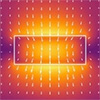| Sep 13, 2022 |
|
(Nanowerk News) High-index dielectric nanostructures supporting electric and magnetic resonances have emerged as new building blocks in nanophotonics for novel functionalities.
|
|
By periodically arranging these nanostructures, the coherent interference between the localized Mie resonances of single nanostructures and the in-plane diffracted light can result in the so-called Mie surface lattice resonances (SLRs).
|
|
Researchers from the Shenzhen Institute of Advanced Technology (SIAT) of the Chinese Academy of Sciences investigated the periodic silicon nanodisks under oblique incidence with transverse magnetic polarization, and discovered out-of-plane Mie electric dipole surface lattice resonance (ED-SLR) for the first time.
|
|
The study was published in Optics Express (“High-Q out-of-plane Mie electric dipole surface lattice resonances in silicon metasurfaces”).
|
|
The team discovered that the out-of-plane Mie ED-SLR could be excited together with the in-plane electric dipole SLR (ED-SLR), magnetic dipole SLR (MD-SLR) and magnetic quadrupole SLR (MQ-SLR) in periodic silicon nanodisks under oblique incidence. They found that the out-of-plane Mie ED-SLR could have four times larger quality factors than the in-plane one under the same condition.
|
|
LI’s team noticed that, unlike the out-of-plane plasmonic ED-SLR, which is a subradiant or dark mode, the out-of-plane Mie ED-SLR can be treated as a bright mode, and has distinct near-field optical distributions and dispersion relationship.
|
|
“This is because the dipole field for Mie ED-SLR is induced by displacement currents, and the plasmonic ED-SLRs are induced by free electron gases,” said Dr. LI Guangyuan, corresponding author of the study.
|
|
The researchers also found that the out-of-plane Mie ED-SLR can define a symmetry-protected bound state in the continuum at normal incidence. This is because the out-of-plane Mie ED-SLR is not allowed to emit at normal incidence. For small incidence angles, the quality factor can even reach as high as 104.
|
|
“This work provides a new approach for achieving ultrahigh quality factors of Mie SLRs in dielectric metasurfaces,” said Dr. LI. “Additionally, the coexistence of multipole SLRs open new prospects for manipulating light-matter interactions.”
|
